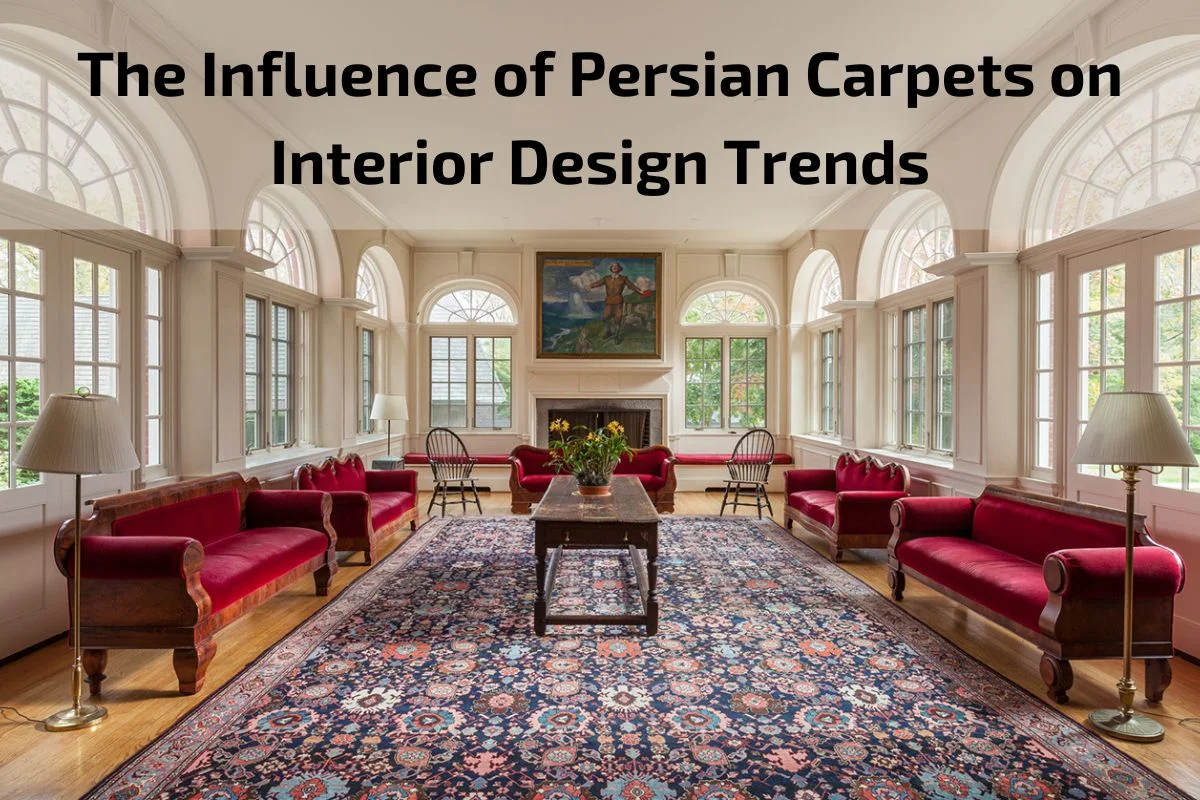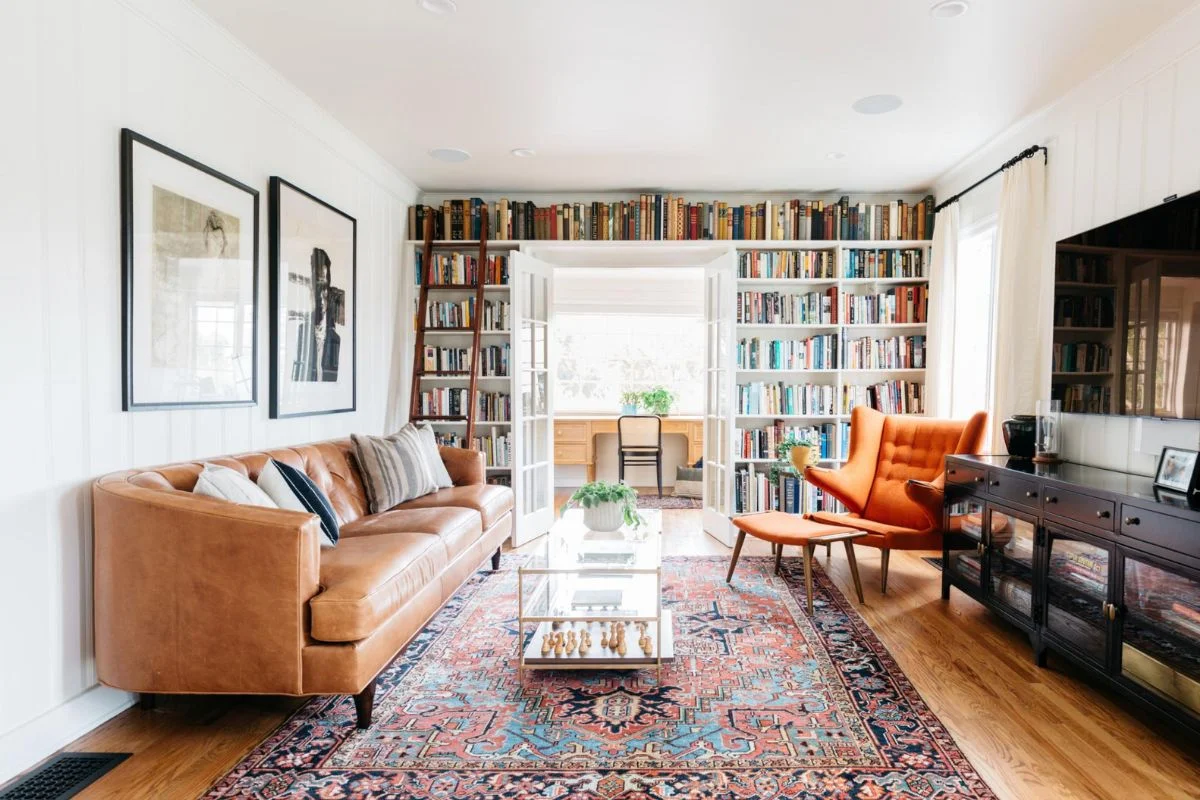
For centuries, Persian carpets have captivated the imagination with their exquisite beauty, intricate designs, and unparalleled craftsmanship. Originating from the heartlands of Iran, these carpets have not only adorned floors but have also left an indelible mark on interior design trends worldwide. With their timeless appeal and rich cultural heritage, Persian carpets have transcended borders, influencing the way spaces are adorned and cherished.
The influence of Persian carpets on interior design trends extends far beyond mere decoration. Each carpet tells a story, reflecting the artistic traditions, cultural narratives, and regional identities of the communities where they are crafted. From the grand palaces of ancient Persia to contemporary urban dwellings, these carpets have adorned the floors of homes, mosques, and bazaars, imparting a sense of warmth, elegance, and sophistication to any space they grace.
Brief Overview of Persian Carpets:
Persian carpets, also known as Iranian carpets, are renowned worldwide for their exquisite beauty, intricate designs, and unparalleled craftsmanship. Originating from ancient Persia, modern-day Iran, these carpets represent centuries of tradition, culture, and artistic expression.
Handwoven by skilled artisans using age-old techniques passed down through generations, Persian carpets are prized for their quality, durability, and attention to detail. Each carpet tells a story, reflecting the rich tapestry of Persian history, mythology, and cultural heritage.
Characterized by intricate patterns, vibrant colors, and symbolic motifs, Persian carpets come in a variety of styles and designs, each unique to its region of origin. From the intricate floral motifs of Isfahan to the geometric patterns of Tabriz, Persian carpets showcase a diverse array of artistic influences and craftsmanship.
Beyond their aesthetic appeal, Persian carpets hold deep cultural significance in Iranian society. They are treasured as symbols of prestige, hospitality, and identity, often passed down as family heirlooms from one generation to the next.
Today, Persian carpets continue to captivate enthusiasts and collectors around the world, gracing homes, palaces, and museums with their timeless beauty and enduring legacy. As a testament to the ingenuity and artistry of Persian culture, these carpets remain a cherished cultural heritage and a source of inspiration for designers and connoisseurs alike.
Types and Varieties of Persian Carpets
Persian carpets boast a rich diversity of types and varieties, each originating from distinct regions of Iran and showcasing unique designs, patterns, and weaving techniques. This section delves into the different types and varieties of Persian carpets:
Tabriz Carpets: Hailing from the city of Tabriz in northwestern Iran, Tabriz carpets are renowned for their intricate designs and fine craftsmanship. They often feature elaborate medallion motifs, floral patterns, and rich colors, reflecting the city’s rich artistic heritage.
Isfahan Carpets: Isfahan carpets are celebrated for their exquisite beauty and meticulous detailing. Originating from the historic city of Isfahan in central Iran, these carpets are characterized by delicate floral motifs, intricate arabesques, and harmonious color palettes.
Kashan Carpets: Kashan carpets are prized for their elegance and sophistication. Produced in the city of Kashan, these carpets typically feature bold geometric patterns, intricate vine scrolls, and rich hues of red, blue, and ivory. Kashan carpets are esteemed for their high-quality wool and skilled craftsmanship.
Kerman Carpets: Kerman carpets are renowned for their fine weave, intricate designs, and soft color palette. Produced in the city of Kerman in southeastern Iran, these carpets often feature elaborate floral motifs, intricate arabesques, and delicate borders. Kerman carpets are esteemed for their durability and timeless appeal.
Heriz Carpets: Originating from the Heris region in northwestern Iran, Heriz carpets are known for their bold geometric designs and vibrant color schemes. These carpets typically feature large medallions, geometric motifs, and rich reds, blues, and oranges. Heriz carpets are prized for their durability and rustic charm.
Qom Carpets: Qom carpets are renowned for their fine weave, intricate designs, and luxurious materials. Produced in the city of Qom, these carpets often feature delicate floral patterns, intricate arabesques, and rich silk accents. Qom carpets are esteemed for their elegance and craftsmanship.
Nain Carpets: Nain carpets are distinguished by their delicate designs, fine weave, and subtle color palette. Produced in the city of Nain, these carpets often feature intricate floral motifs, scrolling vine patterns, and soft shades of ivory, blue, and beige. Nain carpets are esteemed for their elegance and understated beauty.
Baluch Carpets: Baluch carpets are woven by the Baluch tribes in southeastern Iran and neighboring regions. These nomadic carpets are known for their bold geometric designs, tribal motifs, and earthy color palette. Baluch carpets are esteemed for their authenticity and cultural significance.
Incorporating Persian Carpets into Modern Interior Design
Persian carpets, with their timeless beauty and intricate designs, offer a touch of luxury and sophistication to modern interior spaces. This section explores creative ways to incorporate Persian carpets into contemporary home decor:
Create a Focal Point: Use a Persian carpet as the centerpiece of a room to create a focal point and anchor the design scheme. Choose a carpet with vibrant colors and bold patterns to draw attention and add visual interest to the space.
Layering Rugs: Experiment with layering Persian carpets over larger neutral rugs or sisal mats to add texture and depth to the room. Mix and match different sizes, shapes, and patterns to create a dynamic and layered look that adds warmth and character to the space.
Balance with Modern Furniture: Pair Persian carpets with sleek and contemporary furniture pieces to create a harmonious balance between old and new. Opt for clean lines, minimalist designs, and neutral colors to complement the intricate patterns and rich colors of the carpet.
Mixing Patterns and Textures: Embrace the eclectic charm of Persian carpets by mixing patterns, textures, and colors in your interior decor. Pair a Persian carpet with modern geometric prints, tribal motifs, or floral patterns to create a visually stimulating and dynamic space.
Highlight Architectural Features: Use Persian carpets to accentuate architectural features such as exposed beams, arched doorways, or grand fireplaces. Position the carpet strategically to frame the focal point and enhance the architectural character of the room.
Incorporate Art and Accessories: Use Persian carpets as a backdrop for displaying artwork, sculptures, or decorative accessories. The intricate patterns and rich colors of the carpet can complement and enhance the visual appeal of your favorite art pieces.
Enhance Outdoor Spaces: Extend the beauty of Persian carpets to outdoor living areas such as patios, verandas, or garden terraces. Choose durable and weather-resistant carpets made from natural fibers such as wool or silk to add warmth and elegance to your outdoor oasis.
Create Cozy Nooks: Use Persian carpets to create cozy reading nooks, meditation spaces, or relaxation corners in your home. Layer cushions, throw blankets, and floor pillows on top of the carpet to create a cozy and inviting atmosphere for unwinding and rejuvenating.
Customize with Custom Sizes and Shapes: Explore custom sizing and shapes to fit Persian carpets into specific areas of your home, such as hallways, staircases, or alcoves. Customizing the size and shape of the carpet allows for a tailored and personalized approach to your interior design.
Embrace Eclectic Style: Embrace the eclectic charm of Persian carpets by mixing and matching different styles, eras, and cultures in your interior decor. Pair Persian carpets with vintage furniture, modern accents, and global-inspired accessories to create a curated and eclectic look that reflects your unique personality and style.

Care and Maintenance of Persian Carpets
Proper care and maintenance are essential to preserve the beauty and longevity of Persian carpets. Here are some important tips for keeping your Persian carpets in pristine condition:
Regular Vacuuming: Vacuum your Persian carpet regularly to remove dirt, dust, and debris that can accumulate over time. Use a vacuum cleaner with a brush attachment and gently run it over the surface of the carpet in the direction of the pile.
Rotate Your Carpet: Rotate your Persian carpet periodically to ensure even wear and tear. Rotate the carpet every six months to a year, especially if it is placed in a high-traffic area.
Spot Cleaning: Attend to spills and stains immediately to prevent them from setting into the fibers of the carpet. Blot the affected area with a clean cloth or paper towel to absorb as much liquid as possible. Avoid rubbing the stain, as this can spread it further. Use a mild detergent diluted in water to gently clean the stain, then blot with a damp cloth to rinse. Allow the area to air dry thoroughly.
Professional Cleaning: Consider professional cleaning services for deep cleaning your Persian carpet every one to two years. Professional cleaners have the expertise and equipment to remove embedded dirt, stains, and odors without causing damage to the carpet fibers.
Avoid Direct Sunlight: Limit exposure to direct sunlight, as prolonged exposure can cause colors to fade and fibers to deteriorate. Position your Persian carpet away from windows or use curtains or blinds to filter sunlight and protect the carpet from UV rays.
Use Rug Pads: Place rug pads underneath your Persian carpet to provide cushioning, prevent slipping, and protect the underlying flooring surface. Rug pads also help extend the life of your carpet by reducing friction and wear.
Rotate Furniture: To prevent indentations and uneven wear, periodically rearrange furniture placed on top of your Persian carpet. Move heavy furniture pieces slightly every few months to distribute weight evenly across the carpet fibers.
Avoid Moisture and Humidity: Persian carpets are sensitive to moisture and humidity, which can cause mold, mildew, and rot. Keep your carpet in a dry and well-ventilated area, and avoid placing it in areas prone to moisture, such as basements or bathrooms.
Professional Restoration: If your Persian carpet sustains damage or wear over time, consider professional restoration services to repair and restore its original beauty. Professional restorers can mend tears, replace damaged fringes, and reweave worn areas to restore your carpet to its former glory.
Conclusion:
In conclusion, Persian carpets stand as timeless treasures that epitomize centuries of craftsmanship, cultural heritage, and artistic expression. From their intricate designs and vibrant colors to their enduring beauty and unmatched quality, Persian carpets hold a special place in the world of interior decor.



